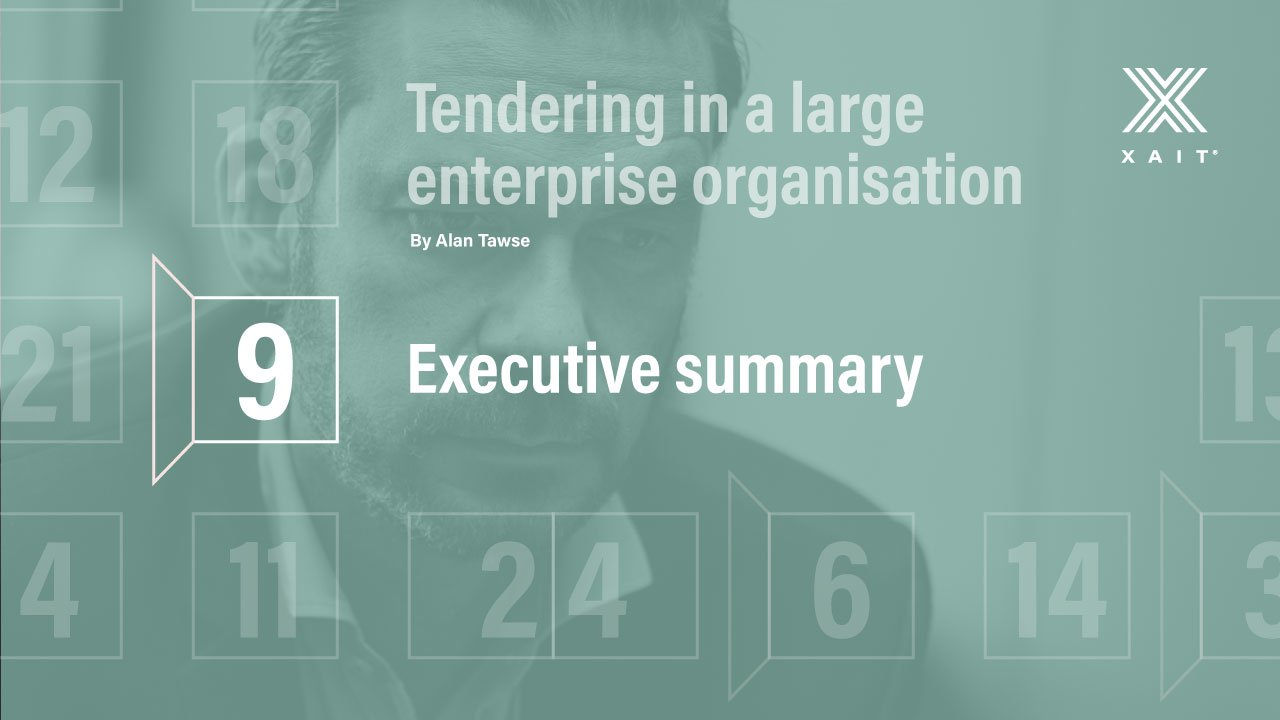
Executive summary
08.12.2020
-2 min

Software
LET'S TALK!
We offer software that makes you win big and ultimately gives you the work-life balance you deserve.

XaitPorter
Co-authoring and automation solution for complex documents

XaitCPQ
Quickly and accurately price combinations of interdependent products and services
XaitProposal
Guided proposal creation for comprehensive, winning proposals
XaitRFI
The smarter way to respond to RFIs, DDQs and security questionnaires
XaitWebProposal
The easiest way to create interactive and custom mini-websites

XaitAI
The X factor for analyzing and writing winning bids and proposals
Industry
OUR SOLUTIONS BY INDUSTRY
Do you have a question about your business vertical?
Resources
RESOURCES
Discover all our Xaiting resources!
About us
LET'S TALK
We can challenge mindsets and make significant changes to the way people interact

Alan Tawse
08.12.2020
-2 min

For the best result, an Executive Summary should be developed and drafted during the tender pursuit phase, and then reviewed and updated at the start of the tender process, to align with the tender documents.
The summary gathers together all the important elements of the bidders response into one place, making it easier for the client to understand why the bidder may be the best choice for an award. It gets its name from the idea that it is a short overview that could be easily read by a client executive to give them an understanding of the bidders submission and the reasons why they would be a good choice, without them having to read the actual bid response.
The tender evaluation process will normally break down the response into multiple sections, often being reviewed by separate individuals or teams. Most people in the evaluation process won't have the opportunity to read through the entire submission. For this reason, the summary provides a useful overview of the bidders offer, and may help condition the thinking of whoever reads it, prior to getting down to the detailed work of reviewing and quantifying the bidder's response.
Used correctly, the Executive Summary is also an important tool for the bidder's own writing team by providing a guide as to what information needs to be included and highlighted in the responses that they prepare. It is therefore important that it is available early in the tender process so as to have the maximum effect. If the summary is created at the end of the response writing phase, then it has had no influence on what or how the writers have compiled in their responses.
An effective Executive Summary will present a professional view of the bidder, and show that they fully understand the client's needs and are ready to provide what is required, fully meeting or exceeding the client's expectations on all aspects. The bidder wants the client to feel that they are the preferred choice – before they begin to read through the rest of the tender response.
The Executive Summary should be brief and focused, and may be formatted as a separate document or leaflet so that additional copies can be included with the tender submission. This makes it easier to share amongst the evaluation team and interested members of the client's management team. For that reason, it is often produced in a 2-, 4- or 8-page layout. If it is larger than that, the summary effect is reduced and it becomes too time-consuming to read through in a few minutes.

Alan Tawse
Alan has worked in the oil and gas industry since 1974 in various administrative, operational and managerial roles in the UK, Netherlands and Norway. In 1993 he joined Halliburton in Norway as country manager of their new Drilling Systems division. Following a merger with Dresser industries in 1998, he moved to Business Development where he established a BD support team providing centralised expertise for tendering, contract management, market intelligence and various BD software systems. After managing up to 200 tenders and proposals annually for over 20 years, Alan retired at the beginning of 2020 with plans to explore Norway, and spend time with family overseas, He enjoys downhill skiing in the winter, golfing in the summer and following the Formula 1 racing season throughout the year.

